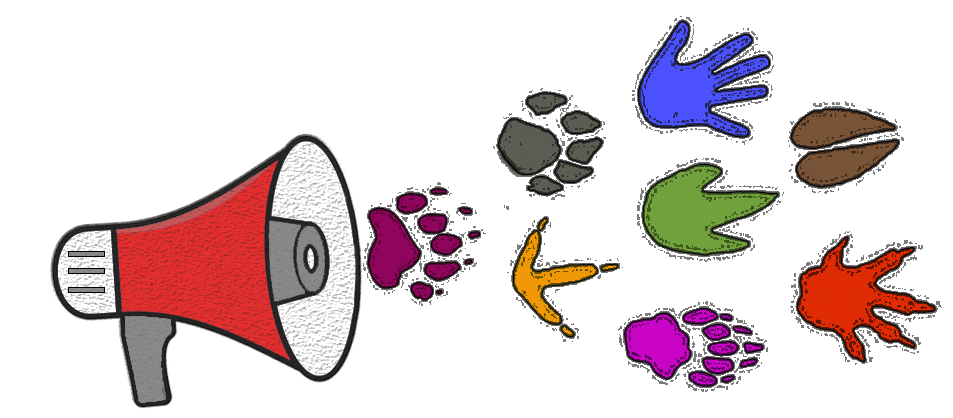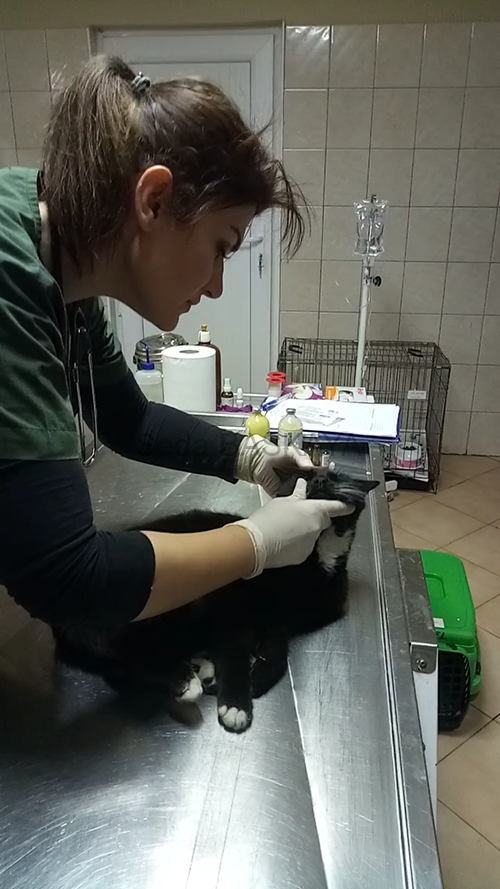Many people do not know what is done in animal shelters. Would you like to listen from a vet who has 4 years of full-time experience as a veterinarian in Turkey?
Turkey is one of the countries with the highest number of owned and unattended pet animals, and we can never imagine a life without them. Therefore, in such a country, regular monitoring systems and registration are more important for us, veterinarians.
Today, all of the shelters in our country belong to the municipality and the government, and in the database created in a single system, almost 3 out of 4 known street pet creatures are recorded by us veterinarians in this system as earrings, chips, and vaccinations.

“Because the right to life is a sacred right. In Kemer Municipality Animal Housing and Rehabilitation Center, this right is given to every animal.
All street animals collected and brought to our shelter are treated by our two veterinarians in our center.
In six months, we have pricked and restrained 546 little friends. We treated 147 friends.”
According to the information in the regulation, all owned and unattended pet creatures; Cat, dog should be placed on the left side of the neck near the ear or under the skin between the two shoulder blades. After the application to be made by veterinarians or technicians, a special passport should be issued for the animal and record in the database. The records should contain the date of animal movements, the information of the business and the owners, microchip numbers, veterinarian and information, date of birth, gender, race, color, and date of death, and the information will be kept for at least 5 years.
Microchip: Applicable to cats, dogs, birds, and laboratory and zoo animals, produced according to ISO 11784-11785 or ISO FDX-B standards, with a frequency of 125, 128, or 134.2 kHz, readable by readers or scanners, and exceptional according to international standards. and electronic devices that contain a 15-digit number on uniqueness and are administered by the veterinarian. The data to be kept in an electronic environment should include the current owner and address of the pet, and information such as vaccinations and change of ownership should be recorded within 15 days at the latest.
Stray animals: Pets that do not have a place to shelter or are located outside the boundaries of their owner’s or guardian’s home and land and are not under the control or direct control of any owner or guardian.
This system, at the same time, is a system that is applied very rarely in the world, where all pharmacological drugs used are recorded on the individual, which facilitates patient follow-up. In addition to providing healthy communication between colleagues, it is a very important step taken for the “one health” system, the importance of which is newly recognized all over the world. It aims to reach accurate statistical information about the resistance that may develop as a result of antibiotic use is only one of the hundreds of data and purposes that can be counted.
This system, which animal hospitals also have to use today, is an active and mandatory system established by the Ministry of Agriculture and Animal Husbandry, where all veterinarians in our country enter with their passwords.
https://www.tarimorman.gov.tr/GKGM/Menus/79/Departments
While the cases I have encountered in the animal hospital provide the advantages of getting a correct and complete anamnesis, shelter medicine requires us to examine the case in the most accurate way due to the lack of anamnesis.
Although we sometimes think that our facilities are lacking, the existence of our private hospitals that we have an agreement with to use their equipment enables us to perform our physician completely.
Multidisciplinary work and its advantages
Being a veterinarian working in both a shelter and a hospital is the most important foundation for my profession. All this experience has enabled me to better understand the importance of preventive public health in my profession. Street or house pets entering the shelter are firstly taken into the system by being chipped; Blood is measured by performing a clinical examination. For the necessary conditions, the examination can be detailed, test and x-ray decisions can be made. If there is a health problem, diagnosis and treatment are performed.
If she is not pregnant, she will be encouraged to be embraced by making impregnation coupling procedures. When the recovery is complete, if the house cannot be found, it is left back to the neighborhood where it was taken. Regular feeding and vaccinations are carried out by the shelter with a mobile vehicle every day. If there is a health problem, they are brought to our shelter and treated.
If the pregnancy is in question and the first trimester is over, the areas where she will feel safe in our living shelter will be taken into delivery, and care and feeding are done until the birth and breastfeeding are completed. When the babies come to the point where they can be fed, each of them is immediately adopted by the announcement. If the mother is, the owner is sought after being impressed.
The most common cases a shelter vet doctor has encountered can be listed as follows;
Traumas; orthopedic traumas and soft tissue traumas caused by a traffic accident. Soft tissue trauma caused by fights.
Metabolic problems are mostly bladder obstructions, difficult births due to early pregnancy, metabolic problems due to contagious viral infections, mouth sores in cats, especially viral eye infections in kittens.

I have always observed that the most distinctive difference between the animals brought to hospitals and shelters is dental health. While dogs that have to feed on the street always have healthier teeth and gums, I would always be aware of the excess of tartar formation, gingivitis, and gingivitis problems in dogs fed with soft food at home. However, it is obvious that pets kept at home have longer vertebrae. These animals, which are regularly vaccinated and do not encounter trauma, live longer than stray animals that encounter traffic accidents and infectious diseases. The problems of pets can be listed as heart sugar and digestive system problems more than those of stray animals. It is possible to interpret that households do not get enough daily exercise and that the food they consume is related to their energy and content.
Basic duties of shelters defined by regulations:
a) By recalling, sterilizing, vaccinating, making the necessary medical care and marking, leaving them back to the environment where they were taken, recording the adopted animals,
b) By registering the animals coming to the shelter, first of all, by recording them in the Stray Animal Record Book, by leaving them to the environment where they are taken after the necessary treatments, sterilization, vaccination, and marking, to cooperate with the local animal protection officers and voluntary organizations for the adoption of the animals coming to the shelter,
c) By making announcements on the municipal notice boards, the internet environment of the municipality, and all other media organs for the adoption of all animals in the shelter,
d) Local animal protection officers and volunteers in all activities such as caring for stray animals, especially dogs, and cats, vaccinating, marking and keeping records, sterilizing, leaving animals back to the environment where they were taken, and sending them to temporary shelters for adoption. ensuring the coordination of organizations and municipal veterinarians,
e) With the purpose of feeding stray animals, if the owners of restaurants, workplaces, and factories in their region deem appropriate, by collecting the foodstuffs suitable for animal feeding, which are formed in their enterprises and kitchens,
f) During their stay in shelter; With legal exceptions, the temporary shelter veterinarian decides that it has a contagious, incurable, or unrecoverable disease after treatment and that it will threaten human and environmental health to an unavoidable degree when it is left in the environment where it is taken, and by ensuring that the animals that are kept are put to sleep in the least painful and fastest way,
g) Filling the Unattended Animal Acquisition Form for persons, institutions, and organizations that want to buy cats and dogs from the shelter, by giving the health report issued by the responsible veterinarian, with the approval of the responsible veterinarian or the responsible veterinarian.
h) Preventing the wastes and residues generated in shelter from harming the environment and public health,
i) With the prevention of commercial animal production in shelter,
j) Pets and animals that died in controlled animals and temporary shelters are buried in deep pits in the designated places and covered with compacted soil or incinerated in the incineration unit and infected and zoonotic disease according to the Animal Health and Police Law No. 3285 dated 16/5/1986. By burning the dead animals in the incinerator or duly buried with lime
k) Registration of domestic and ornamental animals and control animals in the owned Animal Registry,
l) In the event that the animal owners who keep their pet and ornamental animals die or become ill in such a way that they cannot take care of their animals; If the reasons of the animal owners are notified to the municipality by their relatives, municipal officials send the animals to shelter or have them adopted,
m) Those who want to buy pets and ornamental animals from the animal temporary nursing home, by completing the Stray Animal Acquisition Form; to register the information of the animal in the Owned Animal Record Book,
n) Organizing the training to be given to business owners who sell pets or ornamental animals,
o) Organizing the training to be given to local animal protection officers,
p) Responsible for taking the necessary precautions in matters related to ensuring the ownership or control of the animals seized under the regulation.

